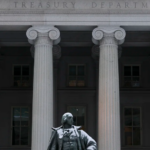Two senior security officials at the U.S. Agency for International Development (USAID) were placed on administrative leave Saturday after they refused access to personnel from Elon Musk’s newly established Department of Government Efficiency (DOGE). The confrontation escalated when DOGE staff attempted to physically enter USAID’s Washington, D.C. headquarters and threatened to involve law enforcement, according to multiple sources familiar with the situation.
The DOGE personnel allegedly demanded access to USAID’s security systems and personnel files, and some sources claimed they sought classified information as well. When denied access, DOGE staff reportedly threatened to call U.S. Marshals to gain entry, further intensifying the standoff.
The two USAID officials placed on leave, Director of Security John Voorhees and his deputy, are the latest in a series of high-level departures at the agency. These events have sparked concerns among some lawmakers that the Trump administration may be deliberately undermining USAID. Rumors have circulated that President Donald Trump is considering signing an executive order to merge USAID with the U.S. State Department, a move that Democratic lawmakers have argued would be illegal.
USAID, which provides billions of dollars in foreign assistance annually, plays a critical role in global efforts to combat poverty, address health crises, and respond to natural disasters. The agency employs more than 10,000 people, with a significant portion of its workforce stationed abroad. In fiscal year 2023, USAID extended assistance to about 130 countries.
This incident comes on the heels of other developments at the agency, including the suspension of around 60 senior USAID staff last week. These employees were accused of attempting to bypass an executive order regarding foreign aid, though no evidence of wrongdoing was found. Another senior official was also put on leave for attempting to reverse the action.
In addition, it has been reported that the entire USAID public affairs office was locked out of its systems, leaving staff without access to their work.
CNN has reached out to both the White House and USAID for further comment on the ongoing situation.









